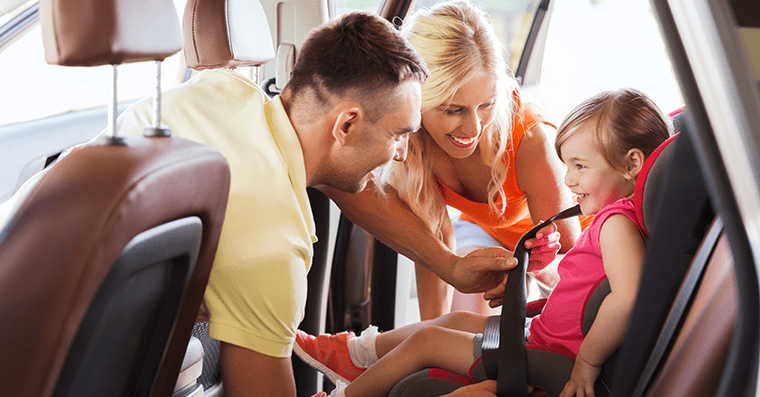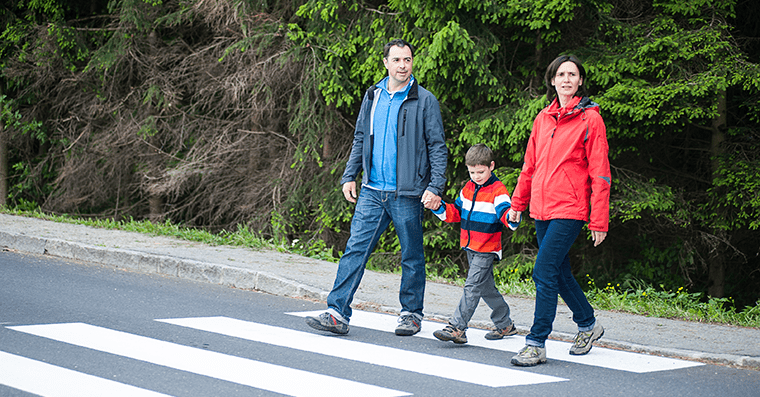Learn More About Safe Families

Everyone wants to have a “safe family,” but that concept is a little abstract. What does it mean for your family to really put safety first?
Making Decisions Based on Safety Information
A core concept that safe families maintain is keeping safety in mind with every decision. That doesn’t mean becoming a buzzkill — it’s absolutely possible to have fun and stay safe at the same time. It just means that everyone in the family knows how to bundle safety into decision-making. In a safe family, safety doesn’t have to stand in the way of having a good time. The two just have to stand side-by-side.
You can even help your younger children understand this idea. As your kids grow up, teach them about how, even if they really enjoy doing something, they should stop to make sure it’s safe to do so first. Visibly demonstrate the concept for them as much as possible; it can be as simple as making sure you walk down the street to the crosswalk instead of crossing in the middle.
Acknowledging Safety for Everyone, Including Kids and Parents
A safe family knows that kids and parents both have to be part of safety, or else the family isn’t truly safe. You can’t just force your children to follow your safety guidelines and never really explain those guidelines or teach your kids how to create their own. Everyone in a family needs to know how to create safe behaviors and enforce those behaviors.
As your kids get older, you can start entrusting more safety behaviors to them. A simple example is giving your kids their own copies of the house key. Remind them that any time they’re the last one to leave, they have to lock the door and keep the key with them so they can get back inside. It sounds like a small thing to do, but it starts to build a sense of innate security consciousness.
Maintaining Open Communication
In any healthy family, open communication is key. Communication builds safety knowledge, and further communication opens that up even further. You don’t have to tolerate blatantly unsafe behavior, but simply shutting your kids down instead of opening up a dialogue can actually be detrimental to the whole family’s safety.
A good way to show kids that something is unsafe without damaging your relationship is to talk them through the unsafe issues, especially as they get older. If your 15-year-old mentions something minorly unsafe, like a situation at school with bullies, engage in dialogue rather than trying to do something for the child directly. That way, your child learns safety skills, builds confidence, and trusts you more.
Can I Really Keep My Family Safe?
It’s not necessarily easy to maintain a safe family. But if you’re able to manage just a few important concepts, you can definitely do it.
Balancing Risk and Reward
The risk and reward balance is something that you might not even think about anymore. As an adult, you’ve probably made enough mistakes that you just understand when you’re balancing risk and reward properly and when you aren’t. But remember that your kids haven’t had all that experience, and so probably don’t understand it as well as you do.
Positive reinforcement works wonders with kids in all areas, but especially here. When your child balances things properly and decides to forgo something because of high risk, explicitly reward that decision. If things go the other way and your child ends up getting hurt, help him or her pick up the pieces and determine how to be safer next time.
Understanding and Expecting Life’s Risks
Life is full of risks. Think about it: just by leaving your house, you encounter a number of risks. If you work in construction on the top floor of a building, you take risks in driving a car to work, taking the elevator, and doing your job with heavy equipment. But you take those risks in stride because they’re worth it to support your family.
As your kids grow up, it’s important to teach them that risk is a part of life. You don’t have to be paranoid about it. But if you don’t expect risk, it might catch you off guard. Your kids can also take on this mindset and become safer for it. Reinforce the fact that while risk is part of life, thinking about it and worrying about it doesn’t have to be the main part of life.
Helping Your Family Develop Safety Precautions
Create safety precautions from a young age and adjust these precautions as your children get older. When your children are very young, teach them never to get into a stranger’s car. As they get older, reinforce that your kids are always allowed to leave a situation in which they’re uncomfortable. Continue to build on that with healthy relationship advice as your child gets to a relationship age.
These safety precautions don’t have to be annoying or hindering. In fact, because they offer such important protection, you should use them as something positive. Don’t frame it as a requirement — frame it as a benefit of being safety-minded and your kids will hopefully follow suit willingly.
How Can PeopleFinders Help Keep My Family Safe?

Though you can’t let your children use PeopleFinders, these tools can still benefit your family. As an adult, you can use PeopleFinders to keep the rest of your family safe.
Check New Family Friends
Throughout the years, you’re going to meet lots of new people. Not everyone is out to hurt you, and you probably know that. But if you can make sure these new people are safe, you can save yourself a lot of grief later on down the road. PeopleFinders can help you catch it right at the beginning.
Whenever you meet a new family, make sure you check on the parents by performing a PeopleFinders background check. With this background check, you can verify their identities, and determine if there’s any criminal past that you should be worried about. It makes it easier than ever to ensure that you’re making friends with other families that aren’t dangerous for the people in your family.
Look Into Any Violent Behavior
Sometimes, you can see a person's violent inclinations simply with a keen eye, but PeopleFinders may very well help cement it. Learn what kind of red flags to look out for in someone with a history of violence, and explain those red flags to your children. Your kids can learn how to recognize when someone has a propensity toward violence or abusive tendencies and can avoid that right off the bat.
For your part, you can check PeopleFinders to make sure that the adults you meet don’t have a record of violence in their past. You just have to perform a criminal records check. With just a few clicks, you can see if that person has any arrests or convictions for violence.
Keep an Eye on Neighborhood Crime
Certain neighborhoods tend to be higher in crime than other areas. You can use crime statistics from a PeopleFinders address lookup in two very useful ways. Keep an eye on the crime in your own area to ensure that it stays even or decreases, and look up the crime rate via the addresses in the neighborhood to which you might be moving.
With the ease of a PeopleFinders address lookup, this is an easy piece of the puzzle to add to your safe family. Teach your kids practical skills, and back up those practical skills with the help of PeopleFinders.
Frequently Asked Questions
How can peoplefinders.com help safe families?
You can research other kids' parents, the new neighbors down the street, and others, to try and make sure that they are safe for you and your children to be around.
Can I research others for free on peoplefinders.com?
You can start a search with a person's name, address, phone number, or email address. But to access the kinds of information that can help you determine someone's level of safety, there is a cost involved.
How can I do research on safe families online?
You can find all kinds of safety tips for families online. There are so many, in fact, that you should probably input more specific criteria--car safety tips, fire safety, etc.--in order to find relevant information quicker.
How do public records help safe families stay safe?
Public records may be able to reveal a person's criminal background, including any violent offenses, drugs, or sex offender status. Having that information can help safe families stay away and stay safe.
Where else can I go to get information about safe families?
Talk to local law enforcement, or research home security systems.